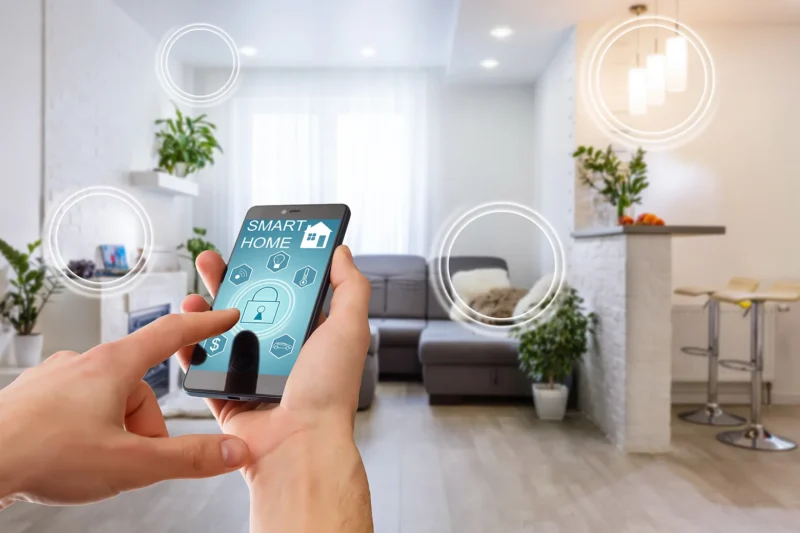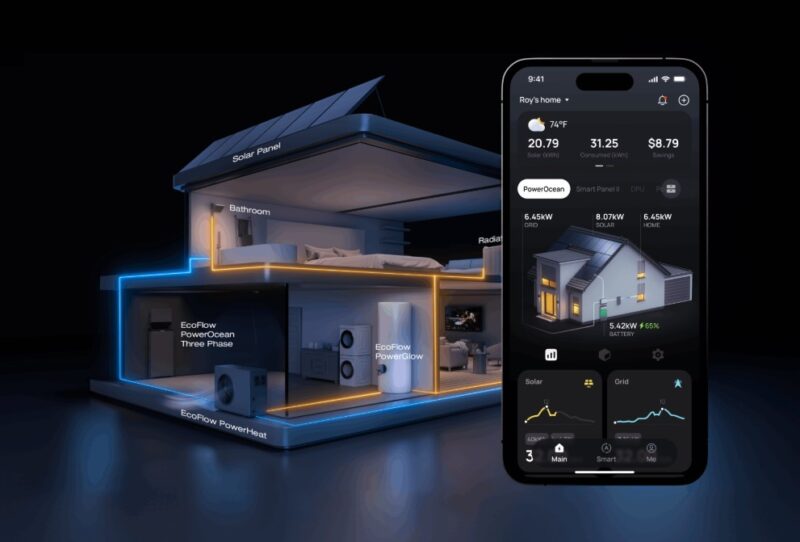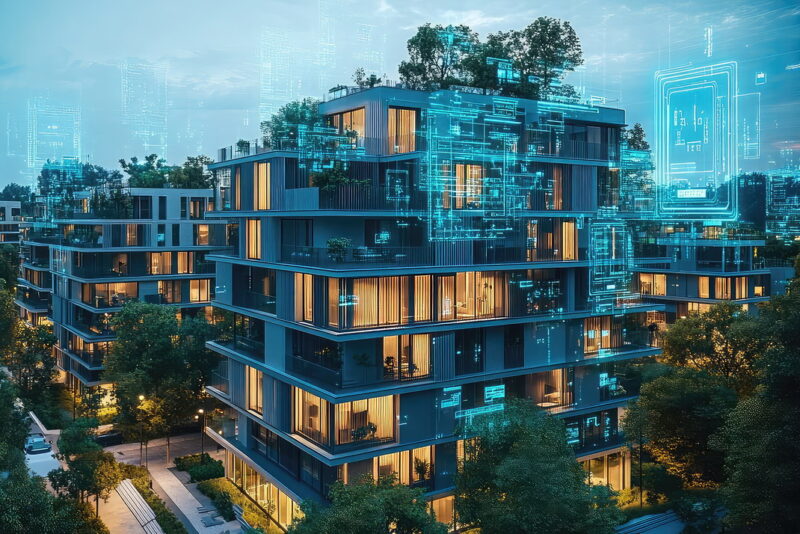You don’t have to sacrifice modern comforts to live sustainably. Innovative solutions allow us to lessen our environmental impact. This without sacrificing our current way of living. The combination of smart technology, smart design, and a new perspective makes green living economical, simple, and attractive.
The secret is efficiency. Using resources wisely cuts waste, lowers costs, and helps the environment. This isn’t a call to endure. It’s a chance to outsmart the old way of doing things.
Smart Homes That Think for Themselves
The latest homes are now equipped with low-key intelligence. Smart thermostats adjust the indoor climate automatically, like warming the living room to 70 degrees before your arrival and cooling it down when you’re away. Most people won’t notice, but the bill could fall 20%.
It’s the same for smart lighting. Ceiling lights turn on with motion and turn off when the room is empty. Smart dimmers change light based on sunlight and time of day. Combining these gadgets and LED lightbulbs results in major energy savings.
Smart irrigation saves water by using weather forecasts. If it rains, the system skips the next cycle. Sensors buried beneath the surface monitor soil moisture, and the grass is watered only when necessary.
Homeowners can control everything remotely via smartphone apps. Forget to dial down the heat before flying to the beach? A single screen tap lowers the thermostat by five degrees, even from across the nation.

Transportation Revolution on Our Streets
Electric vehicles are rewriting the script on how we move around town. With no tailpipe, no gasoline, and only a tiny fraction of the parts, the bills now run about three cents a mile to charge, versus the twelve cents it takes to burn a gallon.
Charging options are popping up everywhere. Sit at a fast-charging station for half an hour, and the car picks up another 200 miles. Plug a car into the same home outlet you use for your phone, and the battery is ready to go by breakfast.
Public transportation is also improving. Electric buses are silent and emission-free. Fuel and maintenance costs are therefore reduced for cities. To that end, passengers benefit from an improved travel experience.
Bike-sharing and e-scooters provide emission-free short trips. Users find, unlock, and pay for bikes and scooters via an app. These shared options reduce clutter, parking needs, and traffic jams.
Carpooling allows travel without personal parking. By grouping passengers going in the same direction, they reduce the number of vehicles on the road. This decreases fuel consumption and passenger emissions.
Energy Systems That Power Progress
Solar panels and wind farms are now the cheapest sources of electricity. The cost of solar has fallen 90 percent in the past ten years, so in many markets, it undercuts coal and gas. Solar homes often send excess power back to the grid.
View this post on Instagram
Batteries store extra renewable energy. Grid batteries store energy during high solar/wind and release it during peak demand or drops in generation. This buffering stabilizes the grid and maximizes clean energy.
The people at Blues IoT explain that smart grid connectivity knits every part of the power network into a single, adaptable ecosystem. Power reroutes automatically during outages, and renewables integrate seamlessly. Smart meters provide instant consumption updates for households.
Community solar extends solar access to those unable to install rooftop panels. Participants buy into a solar field and get lower electricity bills.
Geothermal systems use the Earth’s temperature to heat and cool buildings efficiently. These systems work regardless of the weather. They can potentially cut energy bills in half.

Waste Reduction Through Smart Design
Circular economy methods prompt a shift in our relationship to waste. Instead of the older linear “extract, produce, discard” routine, circular design forges items that are ready to be reused, recycled, or composted as soon as they’re done serving their primary purpose.
Modular electronics embody this thinking: devices are structured so that individual parts can be replaced or upgraded without scrapping the entire unit. When a smartphone’s camera technology advances, the original module is simply swapped for a new one. This strategy not only curtails the avalanche of electronic refuse, but it also lightens the financial load on users.
3D printing opens the door to on-site manufacturing, trimming the carbon footprint tied to shipping and tossing out heaps of plastic wrap. When a washing machine needs a plastic door latch, the piece can roll out of a local printer rather than cross the ocean in a crate. Some machines are now churning out parts using corrosion-fighting filament pulled from discarded nets and other ocean refuse.
Building the Future We Want
Sustainable tools spread when they polish lives as much as the planet. The winner is the solution that fixes a headache while shrinking the carbon page count. Lower utility bills, more shelf life, and a lighter trash bag; the good stuff piles up till it’s the only choice.
Laws help, too. Congress, state capitals, and city halls wave tax breaks, bankroll labs, and pave the way for longer bike lanes and solar loans. The more the upfront price of a rooftop panel or an EV shrinks, the more block parties that can afford to install one.
Education drives sustainable habits. Classrooms teach students about solar panels, water, and caring for the planet. Adults learn to save energy, recycle, and reduce waste through local workshops and online courses.
Companies see sustainability as an excellent investment. Smart designs, eco-friendly machinery, and efficient supply chains lower expenses and draw in customers concerned about the environment. Firms are getting ready for future environmental rules.

Conclusion
Sustainable choices can enrich life through creative efficiency. Energy-efficient tech makes saving easier. Thoughtful design uses less, lasts longer, and is easier.
The shift to a sustainable lifestyle unfolds one new gadget, one upgraded home, one engaged neighborhood after another. Each family that installs solar panels or cuts water use helps lower costs and makes those choices easier for others to follow. This shared momentum speeds us toward a cleaner, smarter future.
We no longer need to sacrifice comfort for conscience. The tools and ideas we have today let us enjoy both, shaping a planet that serves people and the planet alike.

